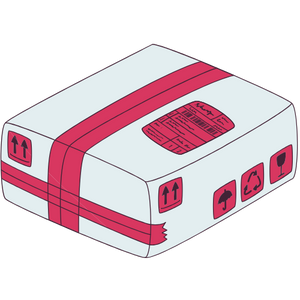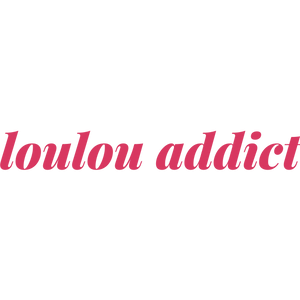3/4 The menstrual cycle. Ovulation
Two weeks ago, we started exploring the female hormonal or menstrual cycle. After looking at periods/menstruation and then the follicular phase, let’s now dive into the ovulation phase. This very short part of the cycle is central and crucial. It’s at this precise moment in a woman’s cycle that fertilization can occur. The body has worked hard to prepare for sperm. A time of fertilization and fertility, ovulation is the highlight of the female cycle. With Loulou, you’ll get all the explanations, symptoms, calculations, temperature, and timing—you’ll be an ovulation expert!

The ovulation phase of the menstrual cycle
As we discussed in our previous articles (menstruation and the follicular phase), the woman’s menstrual cycle is a well-orchestrated, cyclical, and hormonal process.
The secretion of certain hormones, especially in the brain, triggers various responses in the ovaries and uterus. This remarkable natural phenomenon repeats over and over from puberty to menopause. The goal? Simply to allow a woman to conceive. The body prepares again and again for a possible fertilization. When fertilization doesn’t occur, the cycle starts over, periods return, and the process repeats.
In a typical 28-day cycle, ovulation or the ovulatory phase occurs after the follicular phase, which lasts about 14 days. So ovulation happens after your period, right in the middle of the cycle.
In theory, at least. In reality, the female hormonal cycle fluctuates, varies, and can last anywhere from 25 to 45 days. That’s why it’s hard to pinpoint the exact date of ovulation in more irregular cycles. The ovulatory phase occurs 14 days before your next period. So, if your periods are especially irregular, it’s tricky to know exactly when ovulation happens.
Ovulation lasts only 24 hours, or 1 day. It falls between the follicular phase and the luteal phase in the menstrual cycle.
Ovulation Q&A
What exactly happens in your body during ovulation?
If you’ve been following along, your body has shed the endometrium that thickened during the previous cycle (your period). Then come several fairly calm days (the follicular phase), which is the pre-ovulatory phase. One follicle matures during this period. It contains a developed egg or oocyte that’s ready to be fertilized. With each ovulation, only one egg is released from one of the woman’s two ovaries. However, it is possible to ovulate twice in the same cycle. That’s actually how fraternal twins are conceived.
Ovulation is when the mature egg is released from the follicle under the influence of LH hormone. It detaches from the ovary and begins its journey to the uterus, hoping to meet a sperm cell. This meeting happens in the fallopian tube.
No fertilization? The released egg simply disintegrates in the uterus, and a new cycle begins.
Ovulation and fertile days: how many days in your cycle can you get pregnant?
If the egg released from the ovary is only viable for about 24 hours, keep in mind that sperm are more resilient and survive longer. The fertility window is therefore wider than 24 hours. Sperm can actually live for 2 to 5 days.
If you want to get pregnant, it's recommended to maximize your chances by having sex 3 days before your estimated ovulation. Then, try as often as possible. The fertile window lasts about a week. The closer intercourse is to ovulation, the higher your chances of conceiving. So it's important to have sex during your fertile days.
How many days after your period does ovulation occur?
In other words, how can you calculate your ovulation period and know when you’re most fertile? It’s important to understand your ovulation. For some women, knowing their fertile window is essential if they’re trying to get pregnant. For others, it’s important to know their ovulation period to reduce risks and avoid unprotected sex.
It's fairly easy to estimate your ovulation date if you have consistent cycles and regular periods. Ovulation occurs 14 days (roughly 12 to 16 days on average) before your period. These are only estimates and approximations, nothing exact. That's why it's difficult to pinpoint an exact ovulation date. It's even trickier to know the date if you have irregular cycles.
How can I tell if I’m ovulating?
Several tools can help you figure out when you’re ovulating. You can use mobile apps that calculate your menstrual cycle and estimate your ovulation for you. This works if your cycles are fairly regular. If not, you can turn to ovulation tests available at pharmacies. They’re quite reliable.
You can also take your temperature when you wake up. At the time of ovulation, your body temperature rises by 0.3 to 0.6°C. You can also observe your cervical mucus and get familiar with it throughout your cycle to notice differences during ovulation. During the ovulatory phase, cervical mucus is present and clear.
What symptoms might you experience during ovulation?
During ovulation, you may notice clear, stretchy discharge. The cervical mucus produced is stringy and transparent. You'll also experience a slight rise in your body temperature. Some women, though not all, may feel a brief pain in their right or left ovary during ovulation.
Is it possible to have a menstrual cycle without ovulation?
Yes, absolutely, that’s called an anovulatory cycle. Without ovulation, pregnancy isn’t possible. Ovulation can be prevented for various health reasons (thyroid, hyperprolactinemia, etc.), but not only that. Stress, smoking, and even diet can directly impact ovulation.
Polycystic ovary syndrome, or PCOS, is one of the main causes of infertility worldwide. More than one in ten women may be affected by PCOS.
 Don’t forget to pin this article 😉
Don’t forget to pin this article 😉































